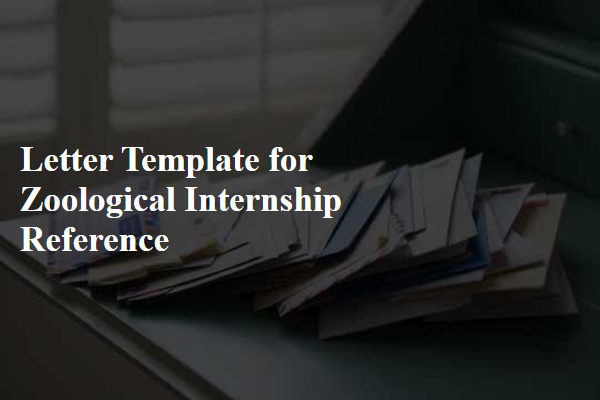In today's fast-paced world, having a reliable personal reference letter can make a significant difference in landing your dream job or securing that coveted opportunity. This essential document not only highlights your skills and experiences but also showcases the personal qualities that make you a standout candidate. Whether you're applying for a new position, pursuing higher education, or seeking a volunteer role, a well-crafted reference letter can provide the extra edge you need. Ready to dive deeper into creating the perfect personal reference letter? Keep reading to discover tips and templates to help you get started!

Salutation and recipient's name
A personal reference letter template begins with a polite salutation, establishing a respectful tone. The salutation should include phrases such as "Dear" followed by the recipient's name, allowing for a direct connection. Including the recipient's title, such as Mr., Ms., or Dr., demonstrates professionalism and provides clarity. Ensuring the name is correctly spelled and accurately reflects the individual's preferred form of address reinforces attention to detail and enhances the letter's credibility. Emphasis on personalization fosters a meaningful acknowledgment of the recipient's importance in the context of the letter.
Relationship to the person being referenced
When discussing the relationship to the person being referenced, highlight key aspects such as duration of acquaintance, context of interaction, and the specific role played in their life or work. For instance, mention how long you have known the individual, whether you were colleagues at XYZ Corporation for five years, or if you served as their mentor during their graduate studies at ABC University. Detail any significant projects or achievements you collaborated on or witnessed, illustrating their skills and character. Including these elements provides a clearer understanding of the depth and authenticity of your reference.
Positive traits and skills
An effective personal reference letter highlights the strengths, positive traits, and skills of the individual being endorsed. Attributes such as strong communication (ability to convey ideas clearly), work ethic (dedication to tasks), and adaptability (capacity to adjust to new environments) are essential. Professional skills may include leadership (guiding teams towards goals), problem-solving (addressing challenges with innovative solutions), and time management (effectively prioritizing tasks). Additionally, personal traits like integrity (maintaining honesty in actions), teamwork (collaborating with others for success), and empathy (understanding and sharing feelings with others) enhance the individual's character profile. Specific examples from past experiences or achievements can add depth and credibility to the letter, emphasizing how these traits manifest in real situations.
Specific examples and anecdotes
A personal reference letter can greatly enhance an individual's application by providing specific examples of their skills, attributes, and contributions. For instance, during a volunteer program at the local community center in Springfield, Illinois, an individual consistently demonstrated exceptional leadership abilities by organizing events that successfully attracted over 300 attendees, fostering a spirit of collaboration among diverse community members. Their ability to communicate effectively was evident when they facilitated workshops on financial literacy, resulting in a 40% increase in participant engagement compared to previous sessions. Furthermore, during a challenging project at the annual charity run, this individual exhibited resilience and problem-solving skills by quickly addressing logistical issues, ensuring the event raised over $15,000 for local charities. These real-world examples illustrate not just the qualities of the individual, but also their positive impact on the community and their dedication to meaningful causes.
Closing statement and contact information
A strong closing statement for a personal reference letter reaffirms the recommender's support for the individual and offers an invitation for further contact. The final lines could include a brief expression of confidence in the individual's capabilities, along with an invitation for the reader to reach out if they require more information. Providing clear contact information, including a phone number and email address, facilitates direct communication. This ensures the letter recipient can easily follow up for additional insights into the individual's qualifications or character.













Comments